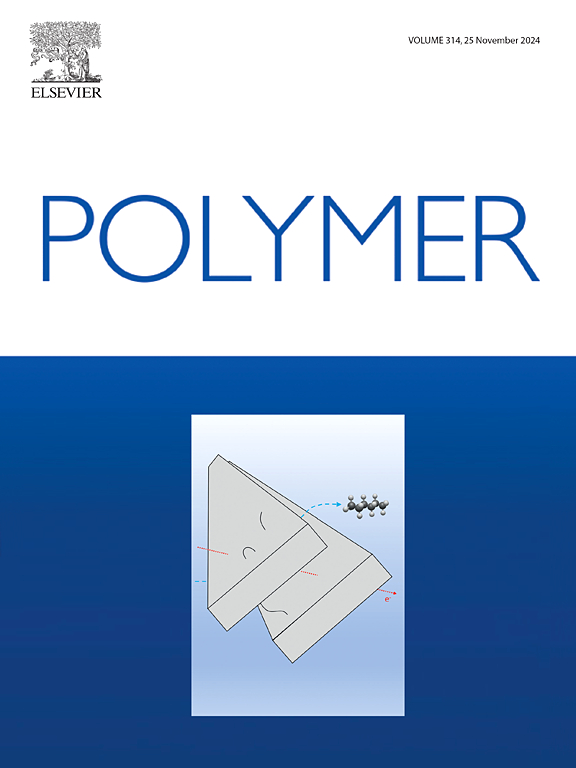Molecular design of effective compatibilizers of a crystalline polymer Blend
IF 4.1
2区 化学
Q2 POLYMER SCIENCE
引用次数: 0
Abstract
Managing the end-of-life of plastics is a challenging problem for a variety of reasons, including the complexity of recycling mixed waste streams. This is due to the inherent immiscibility of different polymers. One method to improve the properties of immiscible polymer pairs is through compatibilization. This study is designed to provide insight into the molecular mechanisms that result in the effective compatibilization of immiscible polymer blends that contain crystalline polymers, as crystalline polymers are a dominant fraction of the waste stream. In this study, the immiscible polymer pair examined contains polyvinyl chloride (PVC) and a polyolefin, as this pair of polymers is difficult to sort and make up a significant portion of commercial polymers in the waste stream. In these studies, the strength of the interface between amorphous poly(vinyl) chloride (PVC) and semicrystalline polyolefin elastomer (POE) compatibilized with chlorinated polyethylene (c-PE) are monitored as well as the strength of the interface between each homopolymer-compatibilizer pair. The results of this research show improvement in the interfacial adhesion at the c-PE/POE, c-PE/PVC and PVC/c-PE/POE interfaces as the blockiness of c-PE increases, which is interpreted to indicate that the entanglement of the compatibilizer with both the amorphous and semicrystalline phases is necessary to effectively compatibilize the biphasic interface. Further DSC, SAXS, and WAXS data provide evidence that semicrystalline compatibilizers can co-crystallize with the polyolefin elastomers, indicating that the co-crystallization can further strengthen the biphasic interface. Thus, this research provides insight into the molecular design of effective compatibilizers and the molecular level mechanisms that occur in compatibilized phase separated amorphous/crystalline polymer blends.


求助全文
约1分钟内获得全文
求助全文
来源期刊

Polymer
化学-高分子科学
CiteScore
7.90
自引率
8.70%
发文量
959
审稿时长
32 days
期刊介绍:
Polymer is an interdisciplinary journal dedicated to publishing innovative and significant advances in Polymer Physics, Chemistry and Technology. We welcome submissions on polymer hybrids, nanocomposites, characterisation and self-assembly. Polymer also publishes work on the technological application of polymers in energy and optoelectronics.
The main scope is covered but not limited to the following core areas:
Polymer Materials
Nanocomposites and hybrid nanomaterials
Polymer blends, films, fibres, networks and porous materials
Physical Characterization
Characterisation, modelling and simulation* of molecular and materials properties in bulk, solution, and thin films
Polymer Engineering
Advanced multiscale processing methods
Polymer Synthesis, Modification and Self-assembly
Including designer polymer architectures, mechanisms and kinetics, and supramolecular polymerization
Technological Applications
Polymers for energy generation and storage
Polymer membranes for separation technology
Polymers for opto- and microelectronics.
 求助内容:
求助内容: 应助结果提醒方式:
应助结果提醒方式:


